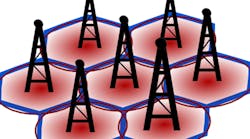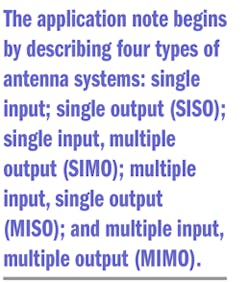Fifth-generation (5G) networks are expected to utilize advanced technology to fulfill lofty expectations. Specifically, massive multiple input, multiple output (MIMO) antenna schemes are likely to be implemented to satisfy future demands. The application note, “Examining the Challenges in Implementing and Testing Massive MIMO for 5G” from Keysight Technologies, begins with a review of the MIMO process. It then discusses some of the challenges associated with implementing massive MIMO, as well as challenges and solutions involved in the simulation, design, and testing of massive MIMO systems.
An overview is provided of the massive MIMO process in a time-division-duplex (TDD) system. Next, two massive MIMO MATLAB simulations are presented, each with four users and one base station. In both examples, each user-equipment (UE) has a single antenna, while the base station contains a multi-antenna array. The base station in the first simulation example has a linear array of 50 omni-directional antenna elements, while the second example’s base station has a linear array of 200 omni-directional antenna elements. The results from both simulations are presented.
Three challenges are discussed in terms of implementing massive MIMO: reciprocity error, signal-to-interference ratio (SIR), and channel coherence time. Challenges and solutions associated with massive MIMO testing are then discussed. For example, test equipment must accommodate the needs for higher frequencies and wider bandwidths. Test methods also must support the tens to hundreds of antennas that are likely to accompany massive MIMO designs. Lastly, the document describes Keysight’s real-time beamforming measurement system, which consists of both hardware and software solutions.
Keysight Technologies, 1400 Fountaingrove Pkwy., Santa Rosa, CA 95403; (707) 577-2663; www.keysight.com


